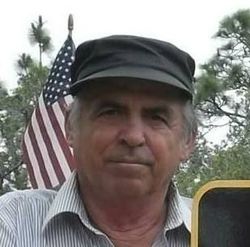Bio
Retired Florida Probation/Parole Officer
I enjoy doing this. It gets me out in the fresh air, a little travel. What surprises me is that about half the people express no thanks, nor appreciation for our time and effort when we post photos that they requested.
Things I have noted over the time I have been here
: There are many, many graves with no markers, unreadable temporary markers, or burials where the marker had not been updated with a new name after a later burial. Older cemeteries used by the poorer families often made the own markers out of wood, or soft concrete and they have long disappeared leaving an 'unmarked' grave.
: If there is no office to give a specific location, it is almost impossible to find a grave if the cemetery is of any size. It helps if a section is known, for example "The Mason" section. Also note what I said in item #1.
: Not all cremations are interred in the cremation/mausoleum section. Some are put in the ground with a regular marker or put in a grave that already exists with a casket.
: For those cemeteries that have offices; some are reluctant or less than helpful in responding to requests for exact grave locations. Some outwardly refuse to give out grave locations unless you are family.
: There are cemeteries that have high percentages of photos taken which indicates that it has been well covered and photographed,yet still may show many listed as "no photo". The most likely reason is that the marker is no longer there, or no longer readable.Thus no photo has been taken because the grave could not be found or identified.
:Many cemeteries have no plot map that they will give out to help one find a grave if the grave site number is known.
:Some layouts make no rhyme or reason as to how and way the locations are named and numbered.
:The majority of cemeteries use a east-west burial pattern. Not all, there are exceptions,especially in large, more modern ones. For the most-part, older small cemeteries use a east west format, and with many of them the head of the stone lays west.
:Overcast days are the best for taking photos. Late afternoon sun will cast harsh shadows since most of the time one will be face west. Polished granite will reflect the sun, especially when overhead on a flat stone.Thus I like overcast days to photograph.
Retired Florida Probation/Parole Officer
I enjoy doing this. It gets me out in the fresh air, a little travel. What surprises me is that about half the people express no thanks, nor appreciation for our time and effort when we post photos that they requested.
Things I have noted over the time I have been here
: There are many, many graves with no markers, unreadable temporary markers, or burials where the marker had not been updated with a new name after a later burial. Older cemeteries used by the poorer families often made the own markers out of wood, or soft concrete and they have long disappeared leaving an 'unmarked' grave.
: If there is no office to give a specific location, it is almost impossible to find a grave if the cemetery is of any size. It helps if a section is known, for example "The Mason" section. Also note what I said in item #1.
: Not all cremations are interred in the cremation/mausoleum section. Some are put in the ground with a regular marker or put in a grave that already exists with a casket.
: For those cemeteries that have offices; some are reluctant or less than helpful in responding to requests for exact grave locations. Some outwardly refuse to give out grave locations unless you are family.
: There are cemeteries that have high percentages of photos taken which indicates that it has been well covered and photographed,yet still may show many listed as "no photo". The most likely reason is that the marker is no longer there, or no longer readable.Thus no photo has been taken because the grave could not be found or identified.
:Many cemeteries have no plot map that they will give out to help one find a grave if the grave site number is known.
:Some layouts make no rhyme or reason as to how and way the locations are named and numbered.
:The majority of cemeteries use a east-west burial pattern. Not all, there are exceptions,especially in large, more modern ones. For the most-part, older small cemeteries use a east west format, and with many of them the head of the stone lays west.
:Overcast days are the best for taking photos. Late afternoon sun will cast harsh shadows since most of the time one will be face west. Polished granite will reflect the sun, especially when overhead on a flat stone.Thus I like overcast days to photograph.
Following
Contributions
- Memorials Added
- Memorials Managed
- 4 Memorials per Week
- Photos Added
- Volunteer Photos Taken
- Flowers Added
- 2 Fame Ratings
- Sponsorships
- Followers
Advertisement







